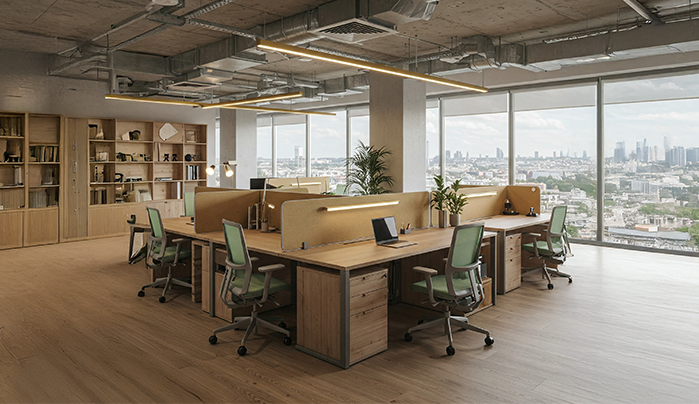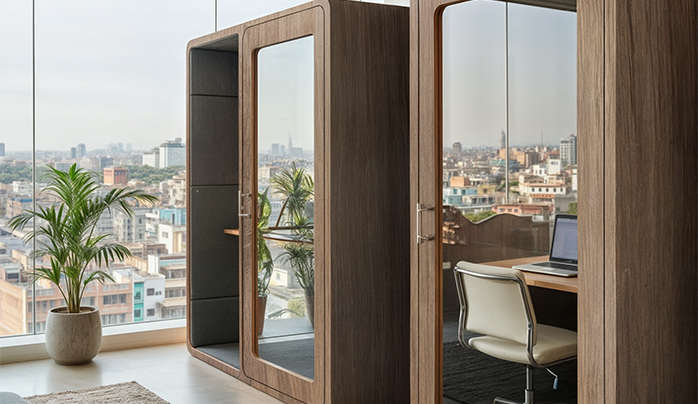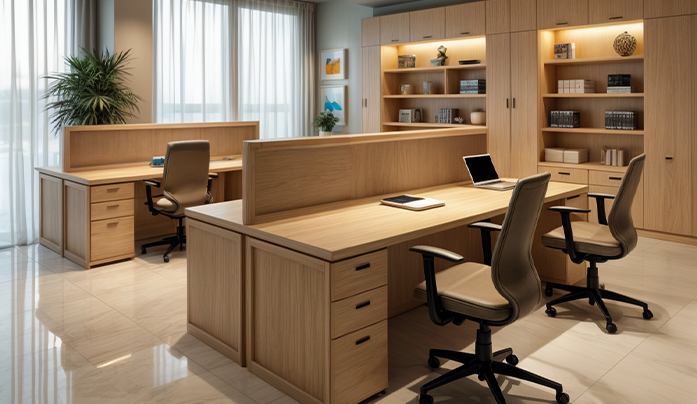
Ever walked into an office and instantly felt the energy of the space? Some workplaces have this effortless flow - where creativity sparks, meetings feel purposeful, and everything just works. That’s not a happy accident. It’s functional office design at its finest.

Offices today aren’t just about desks and conference rooms. They are breathing, evolving ecosystems that shape how people think, collaborate, and perform. A well-designed office isn’t just about aesthetics - it’s about making every square foot work for the people using it.
Think about it: the right spatial planning can reduce wasted movement, improve focus, and boost workplace morale. Thoughtfully chosen materials like sturdy, high-quality plywood for partitions, workstations, and furniture ensure durability and create a workspace that lasts.

The best offices aren’t a maze of cubicles or a haphazard mix of open seating. They have a well-thought-out flow. Departments that need frequent collaboration are placed near each other. Quiet zones are tucked away from high-traffic areas. Movement is seamless, not chaotic.
It’s all about designing with intention, not just throwing in furniture. Using fire-retardant materials such as plywood for partitions and workspaces enhances both safety and functionality, ensuring a workspace that is both secure and adaptable.
Not all work happens at a desk. Sometimes you need a deep-focus corner, other times, a lively breakout space. Functional offices have zones for different needs - collaboration pods, private booths, lounge areas, and standing desks - allowing employees to shift as their tasks demand.
It’s like designing a city within four walls. Natural textures and finishes, such as veneers and laminates, help define these zones, adding warmth and character while maintaining durability.
Bad lighting is an office crime. Harsh fluorescents? Headaches. Dim lights? Sleepy staff. The goal is to bring in as much natural light as possible, paired with well-placed artificial lighting that mimics daylight. Smart lighting systems that adjust brightness based on time of day? Chef’s kiss.
Surfaces with light-enhancing finishes, such as glossy laminates, can help reflect natural light, creating a brighter and more open environment.
Ergonomic chairs, height-adjustable desks, and modular furniture that adapts to changing needs - these aren’t luxuries, they’re essentials. A well-supported body leads to a well-focused mind. Plus, a workspace that physically adapts to employees means fewer distractions and more productivity.
Nothing kills a workflow faster than slow Wi-Fi or a tangle of charging cables. Smart office design integrates tech seamlessly - built-in charging stations, wireless conference setups, and soundproof video call booths. A frictionless workspace is a productive workspace.

The best office spaces feel intuitive, almost as if they were designed by someone who lives in them. Because function, at its core, is about understanding human behavior. When employees feel good in their space, they work better. And when an office is designed for people first, productivity follows naturally.
So, the next time you step into an office and feel like everything just clicks, know that it’s not luck. It's a great design at work.
Loading categories...